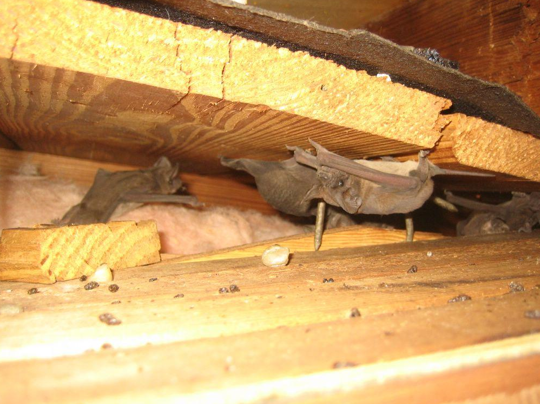 You may be hearing strange sounds from your attic, especially at night, and wondering if you have a bat infestation problem. You may also have seen a bat flying around your house, but you are not sure as to whether there is a whole colony in your attic or not. This article will give you answers to most of your questions.
You may be hearing strange sounds from your attic, especially at night, and wondering if you have a bat infestation problem. You may also have seen a bat flying around your house, but you are not sure as to whether there is a whole colony in your attic or not. This article will give you answers to most of your questions.
Bats are flying mammals that look like rodents with wings. Most bats are insectivorous and keep the insect population at bay; therefore, most states have created laws that protect bat colonies. They are nocturnal animals and are most active at night. Bats are relatively small animals, but they live in colonies, and this makes their impact great. They, like most wild animals, harbor pathogens and diseases and can quickly spread these through their urine and feces.
How Do You Kow You Have Bats As Housemates?
When bats live in your house, they leave visible signs of their presence behind, and with time, these signs become clear evidence that they are present. These signs include:
- Grease stains: Bats enter your attic through any given space in your roof. Sometimes, these holes are small, and the bats need to squeeze in and out of the roof. This process leaves grease stains behind as they squeeze, and with continuous exit and entry, there is a buildup of grease that becomes noticeable over time.
- Guano: Bat feces or guano in your house is a clear indication that you have a bat problem. Guano is black and pebbly and is visible at bat entry and exit points. These are harmful to humans and animals, so stay away from the feces because they contain many parasites and pathogens.
- Strong ammonia smell: Bat droppings strongly smell of ammonia, and this is a tell-tale sign that you have a bat infestation problem in your house. You may also see the stains on your roof and see a buildup of feces in the attic.
- Bats in your house: Sometimes, a bat from the colony in your roof may miss its way and get into your living space or chimney. You can confirm the presence of the bat colony by looking for other signs like grease stains on the roof, windows, or near the attic.
- Sounds: Bats make sounds when they are communicating with one another. Some people say that it is midway between squealing and screeching. You may not hear these vocal sounds if the colony is small, but with larger colonies, the sounds are distinct and can be annoying. They also make scratch sounds on the roof, and their wings flutter. If you listen, you may catch these sounds.
- Night exits: Bats leave their nests at night to search for food, and they make noises during this time that will alert you to their presence. You may also see a few bats around your home late in the evening or early in the morning.
 If you have a bat infestation problem, it’s important to find professional help from your local wildlife control agency in the state or any professional wildlife removal service, like wildlifeanimalpest.com, so that you do not break any of the laws that guide bat removal in your area.
If you have a bat infestation problem, it’s important to find professional help from your local wildlife control agency in the state or any professional wildlife removal service, like wildlifeanimalpest.com, so that you do not break any of the laws that guide bat removal in your area.
Become a Harlem Insider!
By submitting this form, you are consenting to receive marketing emails from: . You can revoke your consent to receive emails at any time by using the SafeUnsubscribe® link, found at the bottom of every email. Emails are serviced by Constant Contact








